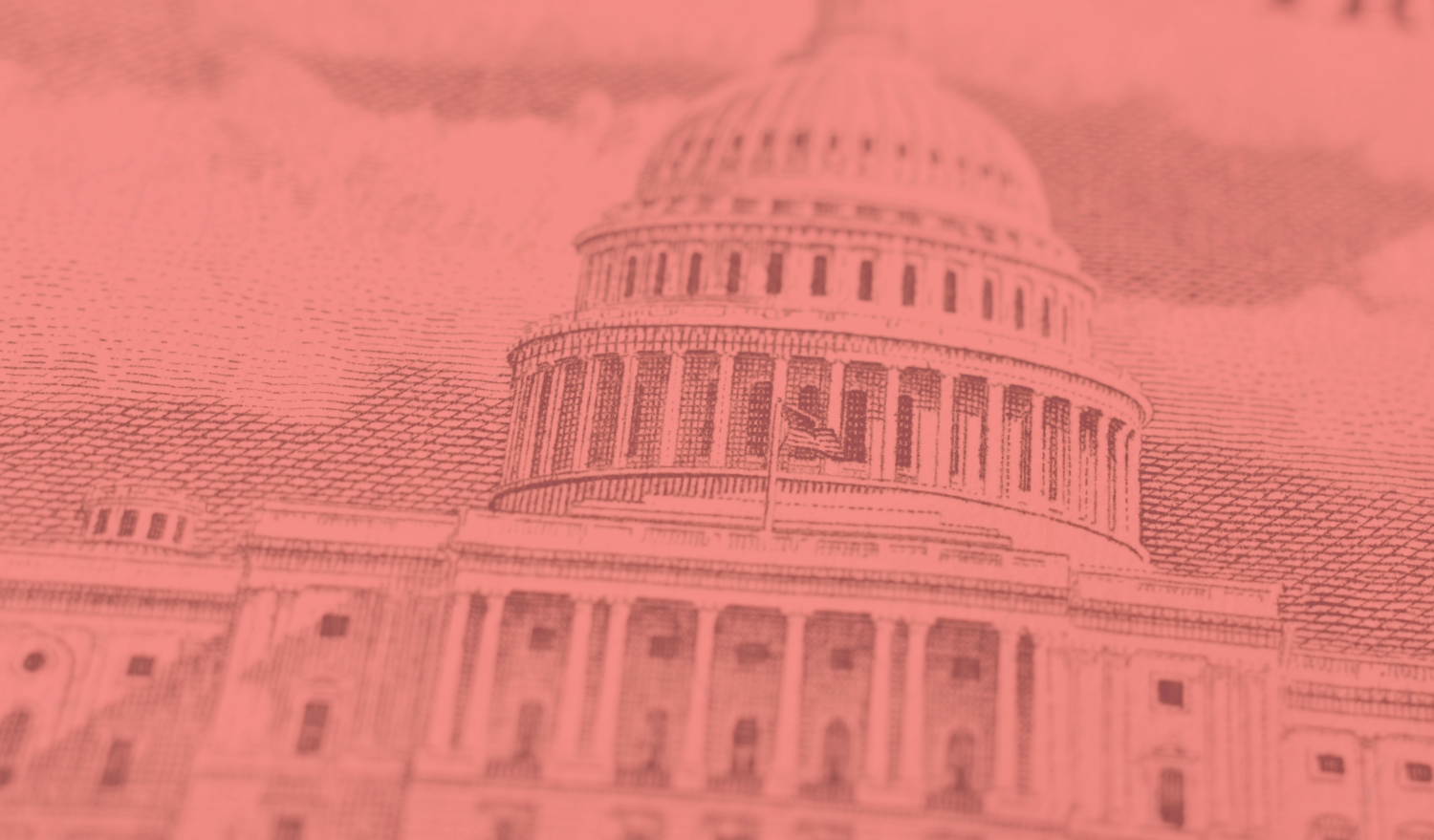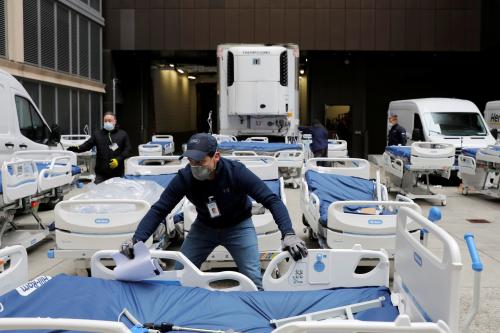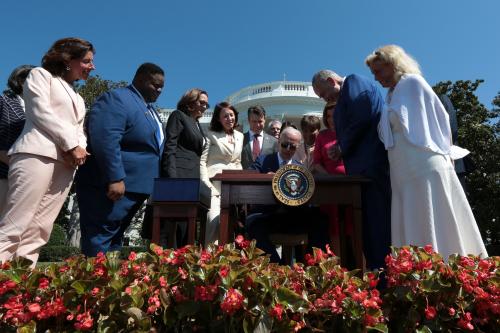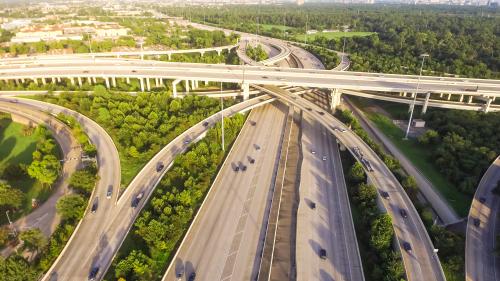Watch here the online event we hosted on this topic, titled Will Congress deliver an infrastructure stimulus?
The COVID-19 pandemic has shaken the nation to its core, and the ensuing economic contraction shows no signs of letting up. As in past recessions, infrastructure is not insulated from these effects—household affordability concerns are rising, strained state and local budgets are delaying projects, and workforce impacts in construction and other industries are just beginning to take shape.
Still, it is the underlying structural factors—how we design our communities, the technologies we deploy, and the projects we fund—that continue to shape our long-term economic trajectory. Infrastructure can act as an economic barrier for many people and places, but it can also function as an economic foundation. An infrastructure stimulus offers real potential, but to maximize that potential, it must build greater economic opportunity for more people and places.
This web brief and accompanying paper use historical data and the earliest indicators from the current downturn to make the case for a people-first approach to federal infrastructure stimulus. We specifically recommend Congress enact a four-part stimulus program:
- A Boost Program (and associated Boost Card) to help cover the costs of essential transportation, water, energy, and broadband services for over 50 million households.
- A Keep America Moving grant program to protect state-of-good-repair initiatives and labor markets by expanding direct grants to state and local governments with requirements to spend on short-term maintenance projects.
- An InfraCorps Program to create and strengthen infrastructure career pathways for underrepresented and disadvantaged groups by securing multiyear funding for workforce development in the skilled trades and, potentially, full-time wages for 3 million apprenticeships.
- An ASCEND Program to promote long-run economic competitiveness by launching four public competitions and four private research investment programs that modernize water infrastructure, accelerate clean energy adoption, expand broadband networks and skills development, and address environmental injustices in transportation and land use.
The total cost of these programs would range from $167 to $327 billion.
Why should Congress pass an infrastructure stimulus?
The 2020 recession is only months old, but such a swift economic contraction will be overwhelming for infrastructure agencies and the people who rely on their services. State and local governments have already cut infrastructure projects and related labor hours due to reduced sales and income tax revenue. The budgetary impacts will only grow if gas tax revenues stay below their targets, if transit systems and airports remain half-empty or worse, and if unemployed workers stop paying their utility bills. For individuals, lost income starts a vicious cycle where some can no longer afford essential infrastructure services—whether it’s filling their car with gas or paying for in-home broadband—which only makes getting to a grocery store or finding a new job that much harder.
Amidst these ominous trends, though, recessions can also offer valuable opportunities to improve infrastructure and expand economic opportunity. Lower interest rates make borrowing cheaper compared to recent years, reducing the upfront costs of generational projects. Infrastructure spending can also create immediate professional opportunities across a mix of design, construction, and operational jobs. The mix of short-term employment and long-term investment makes infrastructure an attractive area for federal stimulus.
Which leaves the core question facing federal policymakers: How can Congress design an infrastructure stimulus that responds to today’s recession while still making forward-looking investments?
At their core, the pandemic and associated recession are stories of human suffering—which means any infrastructure stimulus program must put people at the center. Congress should fund policies that make essential services more affordable, promote workforce development opportunities, and build projects with a more resilient, equitable future in mind. The benefit of a people-first strategy is that it can stimulate greater economic activity immediately while ensuring benefits flow directly to households and communities most in need. Using lessons from past recessions, federal policymakers can design an appropriate response to this unique moment.
Past lessons for an infrastructure stimulus
Lesson 1: Recessions can shock infrastructure demand, but structural factors have a more enduring impact
Historic data confirms that structural issues have a far greater impact on usage patterns than recessions. Aggregate driving levels dipped during many recessions, but have always rebounded as structural factors incentivize automobile use. Recessions also did not hold back freight flows, commercial aviation, and intercity passenger rail. Transit’s changing passenger levels have more to do with local development habits and system design than economic growth. Structural changes in the energy and water sectors—including climate insecurity, product innovation, and changing consumer tastes—have all pushed toward greater efficiency and sustainability.

Early evidence suggests many usage patterns will return once the economy reopens from COVID-19 and people feel safer. Driving levels rose when some state and local economies reopened, and global cities confirmed transit is safe to use. Continued reopenings will allow water and electricity demand to tick up. Policymakers would be wise to design a stimulus based on structural patterns, not temporary deviations.
The major exception is telework and the rapid rise in digital connectivity. A shift to more permanent telework policies could impact local demand for commercial and residential properties, reduce demand for intercity travel, launch new metropolitan competitions for industry and talent, and accelerate calls for universal broadband.
Lesson 2: Infrastructure services weren’t affordable even before COVID-19
Infrastructure is essential to everyday life, but it’s not always affordable to use. As economists point out, infrastructure services such as water and electricity are necessities, and consumers are less sensitive to changes in their price. Infrastructure also tends to be more expensive for lower-income households than their higher-earning ones, with the lowest quintile of household earners spending over 50% of their post-tax income on transportation and other utilities (Figure 4). Research also regularly shows that the price of transportation and broadband are major barriers to use.

The scale of the infrastructure affordability issue could be especially overwhelming during the COVID-19 recession. The U.S. Census Bureau’s Household Pulse Survey through July 14, 2020 found that 50% of respondents experienced income losses since March 13. The likelihood was even higher among those making less than $50,000 per year and with less than a bachelor’s degree. To assist those in need, policymakers should make affordability a chief structural concern.
Lesson 3: Recessions will lead to project delays and layoffs
Recessions always create shortfalls in state and local government’s general tax revenues, which they rely on to plan and fund their annual budgets. Faced with difficult choices and insufficient revenue, transportation agencies, water utilities, airports, and other peers often make the same choice to delay long-run capital projects. Telecommunications and energy companies may prefer to keep cash on hand and delay projects the same way.
Once project delays take place, it can lead to years of lower spending. State and local governments slowed spending on transportation and water capital projects for multiple years following the 1970s recessions and the Great Recession (Figure 3).

Less spending quickly spills into the infrastructure labor market. As public infrastructure owners and operators struggle to plan and pay for projects, private contractors may not provide as many services, execute as much construction, or hire as many workers compared to typical schedules. Still, the transferable skillsets and experience these workers possess could readily translate into opportunities in a stimulus effort, and there remains an ongoing need to train new workers in the skilled trades.
Lesson 4: Federal stimulus is a place to test innovative programming
For nearly 100 years, Congress has seen infrastructure spending as a way to stimulate economic growth during downturns. However, the bills that made the most durable impact on infrastructure-related outcomes were the ones that tested innovative programs to address structural challenges.
Comparing the New Deal of the 1930s to the 1982 and 1991 transportation bills demonstrates two competing approaches. The New Deal used historic spending (Figure 6) to fund entirely new categories of forward-looking projects: delivering clean water, electricity, and telephone service to people for the first time; demonstrating mega-project capabilities such as New York City’s Lincoln Tunnel; and reinvigorating the civic commons through projects such as San Antonio’s River Walk and Charleston, S.C.’s Dock Street Theatre. By contrast, the transportation bills mostly focused on building traditional highways and transit lines. Just as importantly, workforce development programming was central to the New Deal, while the transportation bills take as a given that more spending creates more employment opportunities.

The 2009 stimulus—the American Recovery and Reinvestment Act (ARRA)—used a hybrid approach. Some infrastructure funding went right into current transportation formula programs, water-related revolving loan funds, and other preexisting programs—which did accelerate spending when recipients were prepared. But ARRA also launched the National Broadband Plan and the innovative Broadband Technology Opportunities Program to bridge the digital divide and deliver true high-speed internet service. Funding toward clean energy programs used renewable generation, weatherization, and even new financing models to invest in long-term sustainability. Those innovative programs now serve as models for the next wave of digital and resilience efforts.
The COVID-19 recession lands at an ideal time to learn from these past stimulus programs. So far, service workers, including many women, have borne the brunt of 2020’s initial job losses, which is a major contrast to the Great Recession’s male-dominated layoffs in construction-related occupations. The shift to telework and distance learning only raises the urgency to prepare all people for a digital future. Climate insecurity has grown since 2009, and lessons from fiscally challenged Flint, Mich. and flood-ravaged Houston are still fresh. Advances in mobility technologies and electric vehicles promise new approaches to transportation. The opportunities to develop policy innovations are clear.
A coronavirus stimulus package
Passing an infrastructure stimulus will require more than traditional calls for increased spending or pushing legislation designed for a different economic moment. Federal leaders will need to promote infrastructure policies that directly respond to today’s damaged economy and where the country must go once the worst is behind us.
There are two immediate concerns. One is to support households who either experienced income loss or entered the recession already facing economic disadvantage. The other is to protect current infrastructure workers whose jobs may be threatened by state and local budget cuts. A stimulus can also address the country’s long-run needs, charting a new path for infrastructure policy for decades to come.
We recommend Congress build a stimulus that will deliver immediate and long-lasting benefits, using lessons from past programs. The stimulus should include four core programs:
- Boost Program: Deliver direct household aid to help people pay for essential transportation, water, energy, and broadband services. We recommend households receive a fluid, monthly budget to cover transportation, broadband, and basic utilities in order to start treating infrastructure as a basic human right. All benefits would be tied to household tax information and delivered via the same Electronic Benefits Transfer card—and operational system—used for the Supplemental Nutrition Assistance Program (SNAP). The initial program launch should focus on the lowest-income households and those experiencing recent income losses, using initial reporting data to inform a more durable, long-term program that could include support from other governments and private sector peers. Cost estimate: between $80 billion and $90 billion per year.
- Keep America Moving Program: Provide direct grants to protect infrastructure state-of-good-repair and the current infrastructure workforce. As Congress considers more direct support to state and local governments, a portion of that funding should be dedicated to infrastructure maintenance projects. An infrastructure-focused fiscal infusion to state and local governments would cover any maintenance projects that improve a publicly owned fixed asset, including transportation, water, energy, and broadband infrastructure. Maintenance would focus on repairing existing capital assets, not on large expansions or replacement projects. Congress would develop a formula to scale grants based on state and local fiscal need, which will need to be more formally defined and measured. Treasury would deliver funding directly to state and local governments’ general funds and would be responsible for spending enforcement. Cost estimate: between $50 billion and $100 billion for one year.
- InfraCorps Program: Launch a multiyear program to develop a diverse workforce in the skilled trades. As Congress looks to support small businesses and other affected industries during the COVID-19 recession, there is an opportunity to hire, train, and retain talent in the skilled trades. Working in collaboration with the Department of Labor, federal policymakers should establish a new, 21st century infrastructure workforce program aimed at providing flexible learning and career opportunities in the skilled trades, especially for underrepresented, disadvantaged, and disconnected workers. Programming would focus on specific work-based learning opportunities such as apprenticeships and pre-apprenticeships, and Congress would fund a new program within the Department of Labor focused on future-looking skilled trade careers, including those in the clean economy. The program would make grants to and coordinate with state and local workforce development entities that would help identify potential applicants and participating employers, design targeted curricula and training, and administer and monitor program development. Cost Estimate: $5 billion per year.
If the recession does not end quickly and millions continue to be without work, Congress could spend an additional $95 billion per year to provide full-time wages (at $15 per hour) for 3 million workers—the projected number of infrastructure workers who will retire or need to be replaced over the next decade.
- ASCEND (Affordable, Sustainable, Career-Engaged, Dynamic) Program: Launch a mix of four challenge grants and four research and development programs to tackle long-range challenges. To address long-run threats to U.S. competiveness, we recommend Congress design programs around four core infrastructure outputs: modernizing water infrastructure, accelerating clean energy adoption, expanding broadband networks and digital skills development, and eliminating environmental injustices in transportation and land use. Within each of the four output categories above, we recommend Congress launch two program types:
Challenge grants: Learning from the Smart City Challenge and Race to the Top programs, challenge grants use a proverbial carrot to inspire major planning efforts at the state and local level. By dedicating a large enough pool of funding and ensuring multiple applicants can win grants, Congress can inspire a wealth of new ideas. Congress could designate $20 billion to be spent across the four categories.
Research and development investments: To promote a culture of experimentation, Congress should create a funding pool available to private sector firms. Winning firms would receive an infusion of federal funding in exchange for federally owned stock. This program will accelerate risk-taking and ensure the public sector can benefit from profitable inventions. Congress could designate $12 billion to be spent across the four categories.
The total cost of these programs would range from $167 billion to $327 billion. Congress could dedicate funding through tax increases, but that could dull the stimulating. Instead, we recommend the federal government borrow or consider other revenue sources to cover program costs. Doing so will ensure a stronger economic recovery in the short term and an innovative, more equitable infrastructure system to boost American competitiveness for decades to come.









